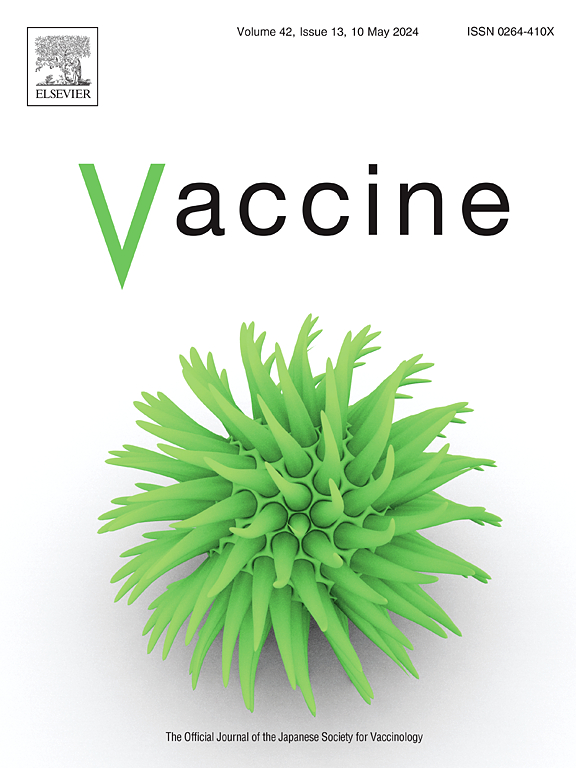Strengthening spontaneous reporting-based signal detection during a pandemic with cases from electronic health records using a natural language processing tool
IF 4.5
3区 医学
Q2 IMMUNOLOGY
引用次数: 0
Abstract
Introduction
During the COVID-19 pandemic, vaccines were rapidly developed, but some potential adverse drug reactions (ADRs) were still undetected at the time of market authorization. The analysis of ADR reports received through the spontaneous reporting system (SRS) remains the cornerstone for safety signal detection. A limitation is that reporting ADRs is voluntary. In this study the added value of electronic health records (EHRs) was explored as an additional source to spontaneous reports, to strengthen safety signal detection concerning COVID-19 vaccines.
Methods
The electronic health record adverse event (EHR-AE) search method was developed to enable targeted searches in EHRs using a natural language processing (NLP) tool with text-mining functionalities to identify additional potential cases. Searches were performed in EHRs of two Dutch hospitals concerning several established and non-established (potential) ADRs associated with COVID-19 vaccines. Identified cases were reported to Lareb and analyzed in addition to spontaneous reports for safety signal detection.
Results
Thirteen searches were conducted between January 1, 2023, and December 1, 2023, concerning different (potential) ADRs associated with COVID-19 vaccines. For 6 associations at least 1 case was identified, resulting in a total of 41 additional cases reported to Lareb. These cases contributed to the detection of two safety signals concerning COVID-19 vaccines. Two safety signals could have been detected approximately 18 and 2 months earlier, if the EHR-AE method had been implemented during the COVID-19 pandemic.
Conclusion
The EHR-AE search method can strengthen and accelerate the signal detection process for potential ADRs associated with COVID-19 vaccination. Future studies should expand to more hospitals, aiming to further evaluate the added value of the method, including for which drug-ADR associations the EHR-AE search method is most beneficial.
通过使用自然语言处理工具从电子健康记录中获取病例,加强大流行期间基于自发报告的信号检测
在2019冠状病毒病大流行期间,疫苗得到了快速开发,但在上市许可时仍未发现一些潜在的药物不良反应(adr)。对通过自发报告系统(SRS)收到的不良反应报告进行分析仍然是安全信号检测的基石。一个限制是报告adr是自愿的。本研究探讨电子健康档案(electronic health records, EHRs)作为自发报告的额外来源的附加价值,以加强COVID-19疫苗的安全信号检测。方法开发电子健康记录不良事件(EHR-AE)搜索方法,利用具有文本挖掘功能的自然语言处理(NLP)工具在电子健康记录中进行有针对性的搜索,以识别额外的潜在病例。在两家荷兰医院的电子病历中进行了搜索,涉及与COVID-19疫苗相关的几种已确定和未确定(潜在)的不良反应。确定的病例报告给Lareb,并在自发报告的基础上进行分析,以检测安全信号。结果在2023年1月1日至2023年12月1日期间进行了13次检索,涉及与COVID-19疫苗相关的不同(潜在)不良反应。在6个关联中,至少发现1例病例,导致总共41例额外病例报告给Lareb。这些病例有助于发现关于COVID-19疫苗的两个安全信号。如果在COVID-19大流行期间实施EHR-AE方法,则可以在大约18个月和2个月前检测到两个安全信号。结论EHR-AE搜索方法可以加强和加快对COVID-19疫苗接种相关潜在不良反应的信号检测过程。未来的研究应扩展到更多的医院,旨在进一步评估该方法的附加价值,包括EHR-AE搜索方法对哪些药物- adr关联最有利。
本文章由计算机程序翻译,如有差异,请以英文原文为准。
求助全文
约1分钟内获得全文
求助全文
来源期刊

Vaccine
医学-免疫学
CiteScore
8.70
自引率
5.50%
发文量
992
审稿时长
131 days
期刊介绍:
Vaccine is unique in publishing the highest quality science across all disciplines relevant to the field of vaccinology - all original article submissions across basic and clinical research, vaccine manufacturing, history, public policy, behavioral science and ethics, social sciences, safety, and many other related areas are welcomed. The submission categories as given in the Guide for Authors indicate where we receive the most papers. Papers outside these major areas are also welcome and authors are encouraged to contact us with specific questions.
 求助内容:
求助内容: 应助结果提醒方式:
应助结果提醒方式:


